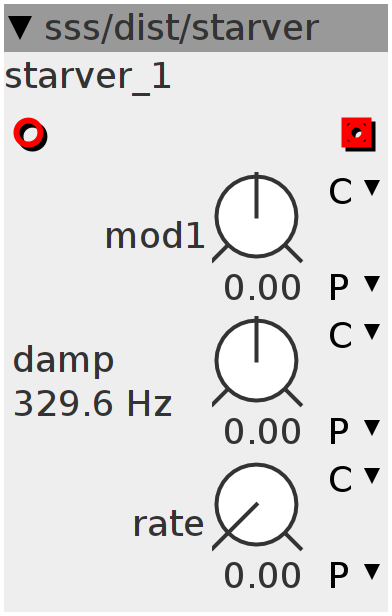starver
Quantizable "starving" distortion The incoming signal will be quantized into stages and at each stage the signal's amplitude gets "starved" and dives back towards zero. Dive-rate can be controlled "mod" sets the size of the stages, fully clockwise would be 1 stage only->no change. Lowering the control will make the stages smaller and smaller, adding more and more stages and overtones. At each quantize-crossing the signal will be starved, like a saw returning to zero. The rate of this change can be controlled using both "damp" and "rate". Rate controls a clipper that clips the linear change of the signal. This module is a variation on the dipper module as it AM modulates the incoming signal instead of subtracting a value. Damp controls the cutoff of a filter that then damps the linearly clipped signal before subtracting it from the original signal before sending it to the output.
Inlets
frac32buffer in
Outlets
frac32buffer out
Parameters
frac32.s.map mod1
frac32.s.map.pitch damp
frac32.u.map rate
Declaration
int32_t O1;
int32_t prev;
int32_t cap1;
int32_t cap2;
Init
SINE2TINTERP(1 << 30, O1)
Control Rate
int32_t damp;
MTOF(param_damp, damp)
Audio Rate
int32_t in = inlet_in;
int32_t comp;
int32_t offs;
comp = in > prev ? (1 << 27) : -param_mod1;
int32_t rate = (comp - cap1) << 1;
rate = rate > param_rate ? param_rate : rate;
rate = rate < -param_rate ? -param_rate : rate;
cap1 = ___SMMLA(rate, damp, cap1);
outlet_out = ___SMMUL(in << 2, cap1 << 3);
prev = inlet_in;